Hugh Broughton Architects, in collaboration with English Heritage, embarked on a project to safeguard Clifford’s Tower in York, United Kingdom, ensuring its preservation for future generations. Completed in 2022 and set to open to the public on April 2, 2022, the project encompasses vital conservation efforts alongside architectural enhancements aimed at enriching the visitor experience.

Historical Significance
Clifford’s Tower, perched atop an earthwork mound erected by William the Conqueror in 1068, holds significant historical importance as the former keep and chief stronghold of York Castle. Over the centuries, it witnessed pivotal events, including the tragic incident of 1190 when the Jewish inhabitants of York sought refuge in the tower but faced dire consequences.
Restoration and Evolution
Originally a timber structure, Clifford’s Tower was later rebuilt in stone, serving various functions such as a treasury and royal exchequer. However, a fire in the 17th century left its interior gutted, reducing it to a shell. Subsequent renovations, including the reconstruction of lower slopes in 1935, aimed to restore its former glory.
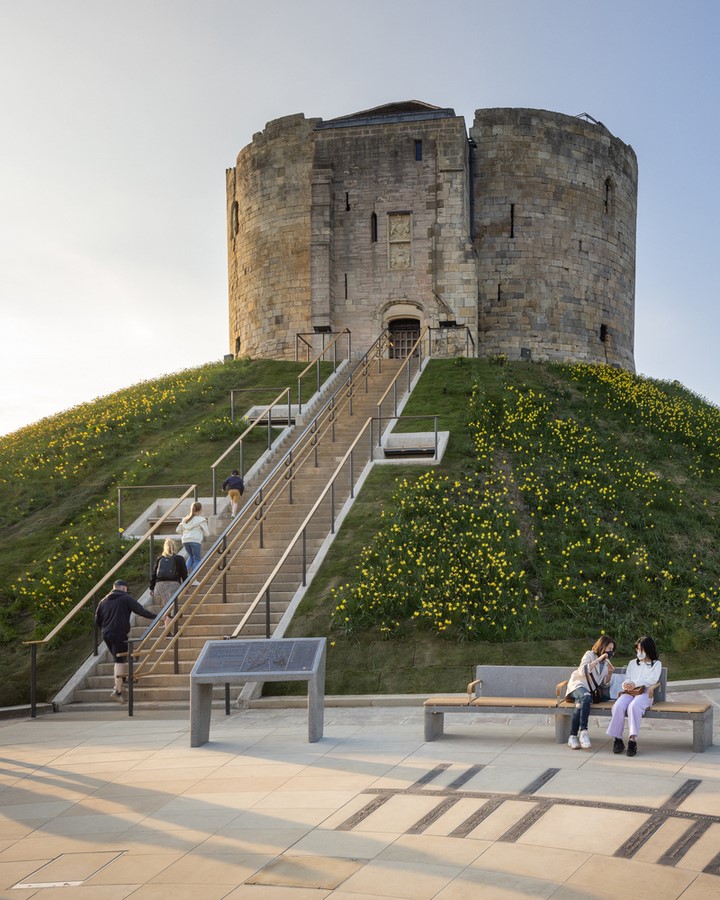
Architectural Innovations
In addition to conservation efforts, the project introduced architectural innovations to enhance the tower’s accessibility and visitor engagement. A new timber deck, supported by soaring columns, partially covers the ruin, providing seating for group activities and facilitating access to previously inaccessible features. Restoration of the chapel included stonework cleaning, removal of unsightly bracing, and roof repairs.
Enhanced Accessibility and Interpretation
Improvements to the tower’s access, including the addition of resting places along the stairwell, enhance visitor experience. The base of the motte features an expanded public area, integrating interpretation elements and accommodating a Piaggio tuk-tuk for ticket and guidebook sales. These enhancements cater to a diverse range of visitors, ensuring inclusivity and engagement.
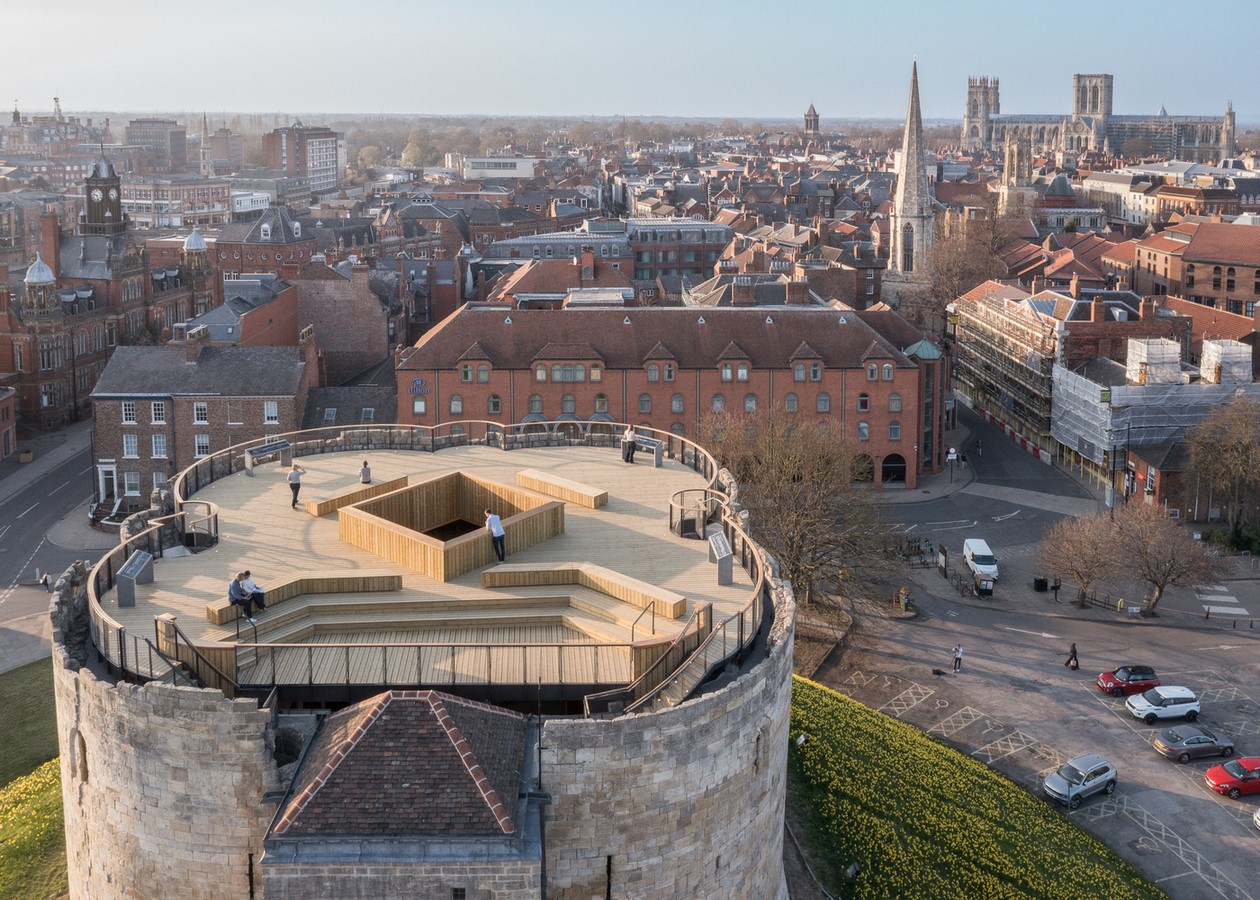
Female-Led Initiative
The project, spearheaded by a female-led team at English Heritage and executed by a female-led design team, underscores inclusivity and diversity in heritage conservation. Led by visionaries such as Andrea Selley, Rachael Baldwin, and Ruth Haycock, the project celebrates collaboration and innovation in preserving and promoting cultural heritage.
In conclusion, the renovation of Clifford’s Tower not only preserves its historical significance but also enhances its accessibility and visitor engagement, ensuring that it continues to inspire and educate generations to come.
- Clifford’s Tower in York. Client: English Heritage Picture date: Monday March 21, 2022. Photograph by Christopher Ison for English Heritage © 07544044177 chris@christopherison.com www.christopherison.com

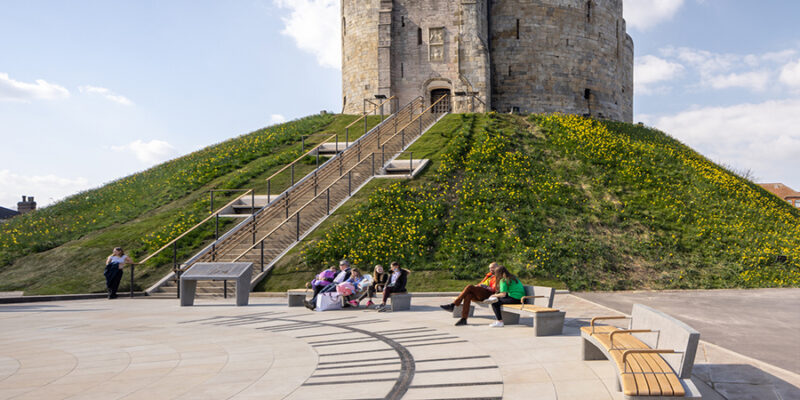



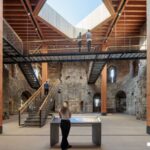
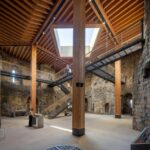

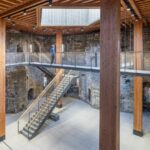





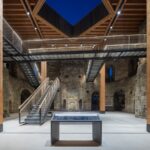
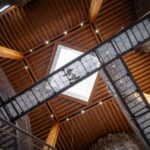





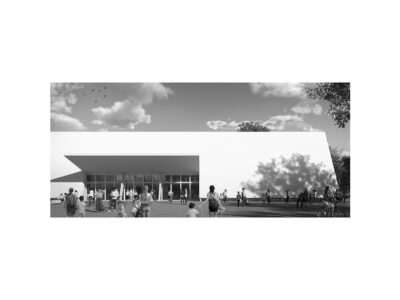
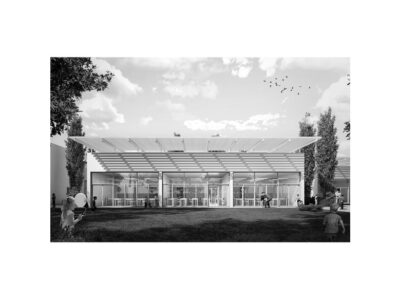

Comments